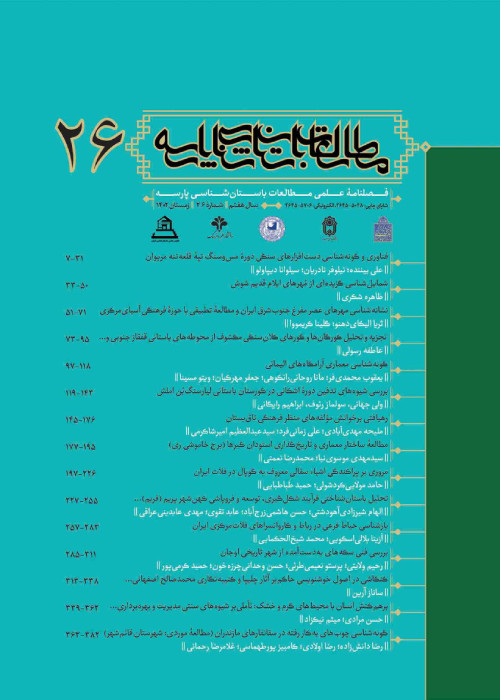An Analytical Study on the A Engraved Bronze Belt Buckle with the Two-Humped Camel, from the Iron Age Site of Lefour, Savadkuh
Among the collection of findings from the archeological excavations of the Iron Age cemetery of Lefour, in Savadkuh, there is an engraved a two-humped camel on a bronze belt buckle, skillfully made through molding method. According to the studies of physical anthropology, in terms of morphology of the skulls, it shows that the excavated dead bodies were different from the previous inhabitants, and the grave goods also indicate they were cattle breeders and nomads. The most prominent object found is a bronze belt buckle with the engraving of a western two-humped camel on it; this animal is definitely not native to the southern region of the Caspian Sea, and may belong to the plains of Central Asia; the southernmost habitat of this type of camel is in the north of Gorgan plain and in the south of Turkmenistan. In the Achaemenid period, two-humped camel is also shown with groups of gift givers who came from Central Asia and the east of the Caspian Sea. In the memorial stone carvings of Shalmaneser III, the King of Assyrians, there are also people carrying two-humped camels, along with the inscriptions seem to be belonged to a far distant country in the east. The most important questions in this study are: Were the human remains found in this cemetery are native or migrated from other areas? Whether the obtained grave inputs were made on site or imported, and to what extent were they influenced by the artistic and industrial techniques from near or far areas? And is it possible to reconstruct the migration route of these groups in the fertile and foothill areas of Mazandaran by studying the findings of this research? In this article, in addition to comparing the form and nature of the bronze belt buckle with other findings of Lefour Cemetery, the authors analyze and interpret it regarding historical documents and sources to provide more accurate answer to the questions. The result of the research reveals that this object was produced in another place and entered the region through immigrants.
- حق عضویت دریافتی صرف حمایت از نشریات عضو و نگهداری، تکمیل و توسعه مگیران میشود.
- پرداخت حق اشتراک و دانلود مقالات اجازه بازنشر آن در سایر رسانههای چاپی و دیجیتال را به کاربر نمیدهد.



